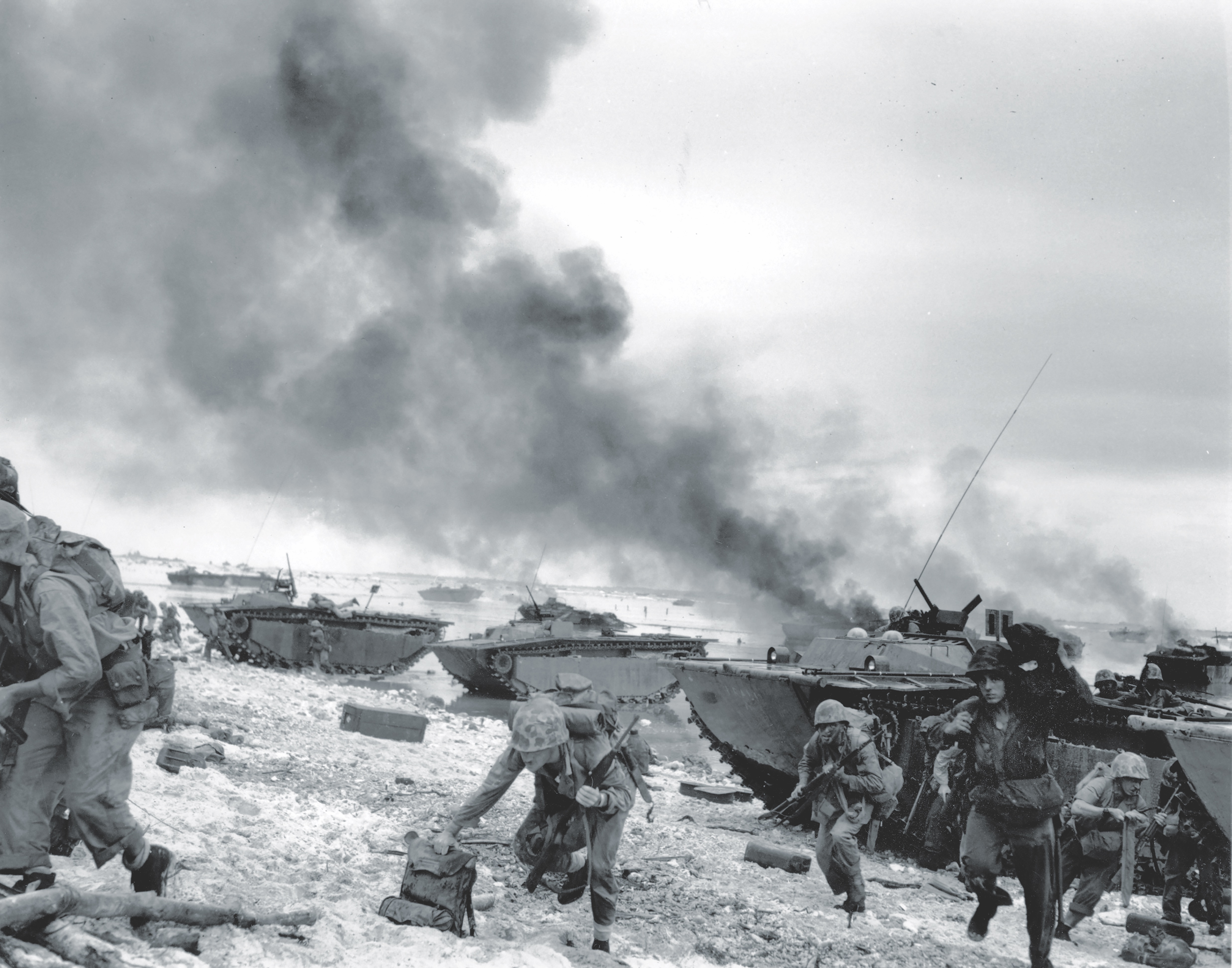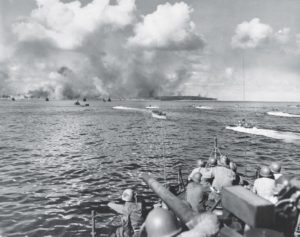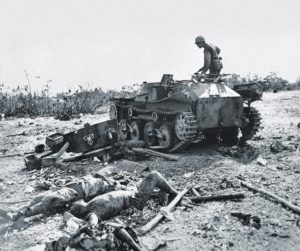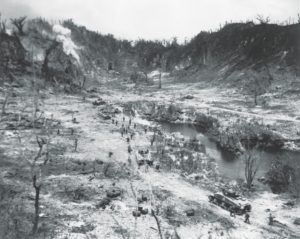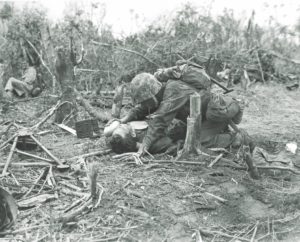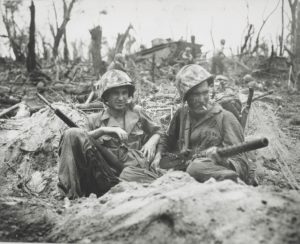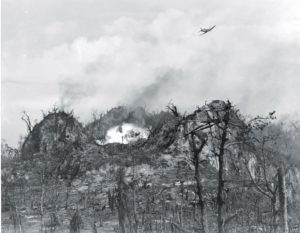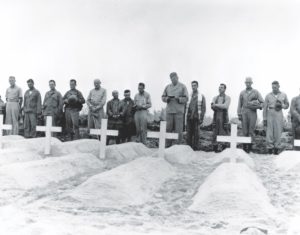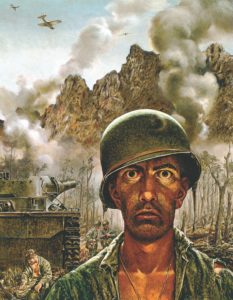By September 1944 U.S. forces had wrested the Mariana Islands and Papua New Guinea from the Japanese and were ready for the next step in their island-hopping campaign toward the Philippines. To keep enemy air assets from threatening the northern flank of the advance, the Americans had to secure Palau, an archipelago in the western Caroline Islands. Lt. Gen. Sadae Inoue, the Japanese commander in Palau, had concentrated some 35,000 troops on Koror and Babelthuap islands, but U.S. forces opted to land on two other islands: Peleliu and Angaur. Bypassed altogether, the Japanese garrisons on Koror and Babelthuap remained isolated through war’s end.
Defending Peleliu was Colonel Kunio Nakagawa with 5,300 troops of the 14th Infantry Division, 1,100 naval infantrymen and some 4,500 other personnel, mostly Korean and Okinawan laborers, to oppose the 17,490 Marines under Maj. Gen. William Rupertus, commander of the 1st Marine Division, who landed on Sept. 15, 1944. After a failed attempt to drive the Marines from the beach, followed by the loss of Peleliu’s airfield the next day, Nakagawa concentrated his forces on Umurbrogol Mountain, exploiting its limestone caves and ridges in a tenacious, ultimately suicidal defense aimed at inflicting maximum casualties on the enemy.
The Marines had expected to take the island in no more than four days (Rupertus had predicted three). But the battle was still raging when 10,994 soldiers of the U.S. Army’s 81st Infantry Division, under Maj. Gen. Paul Mueller, took over on October 30, and Peleliu wasn’t declared secure until November 27—73 days after the initial landings—by which time the liberation of the Philippines was under way. The cost to the Americans was 1,794 dead and 8,010 wounded. Of the 10,900 defenders, 10,695 were confirmed killed in action. Scores of diehards sealed themselves within the caves of Umurbrogol, while Nakagawa committed seppuku (ritual suicide). The Americans captured just 202 men, mostly laborers.
Meanwhile, on landing at Angaur on September 17, 8,000 soldiers of the 81st Infantry Division had quickly established beachheads. Like the garrison on Peleliu, however the nearly 1,400 men of Major Ushio Goto’s 1st Battalion, 59th Infantry Regiment conducted a stubborn fighting retreat until October 19, when Goto fell in action. There the Americans lost 20 men killed and 1,354 wounded, while the Japanese lost 1,338 killed and 59 captured.
On September 23, in a sad irony, U.S. forces had landed on Ulithi Atoll unopposed, securing its lagoon—an anchorage larger than Pearl Harbor—without a single casualty. It soon became a valuable asset toward operations against Japan.

